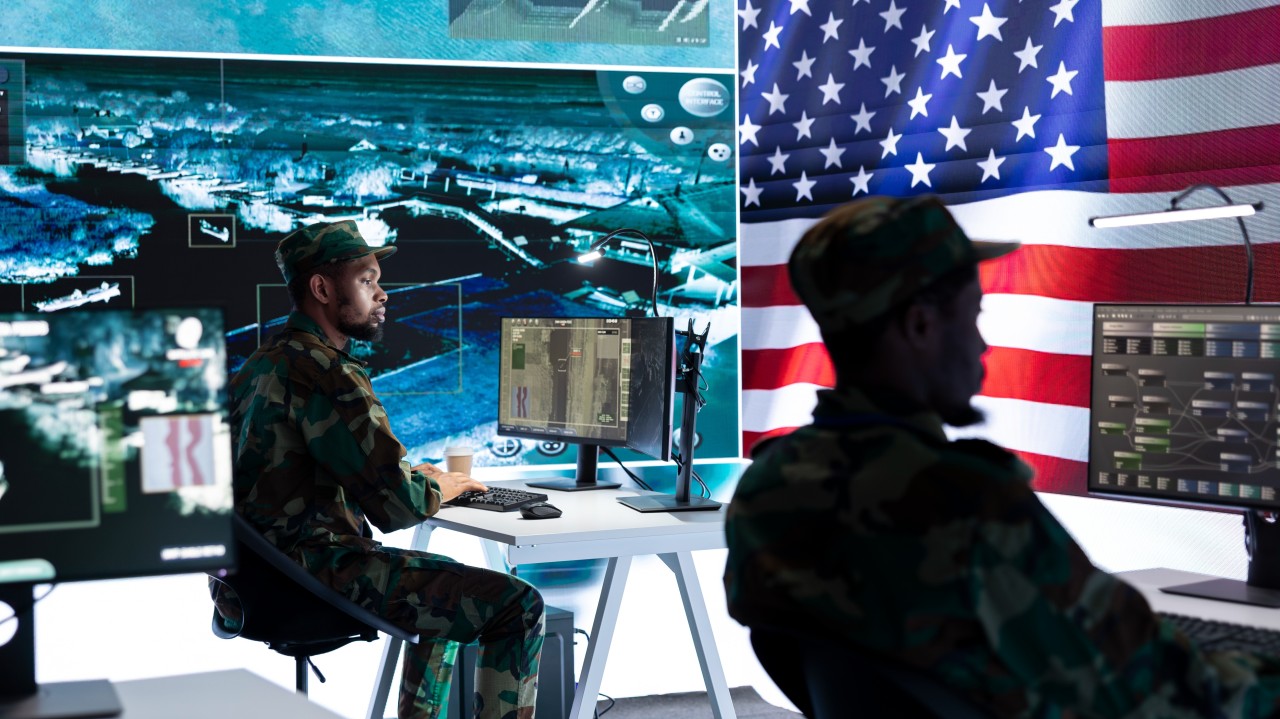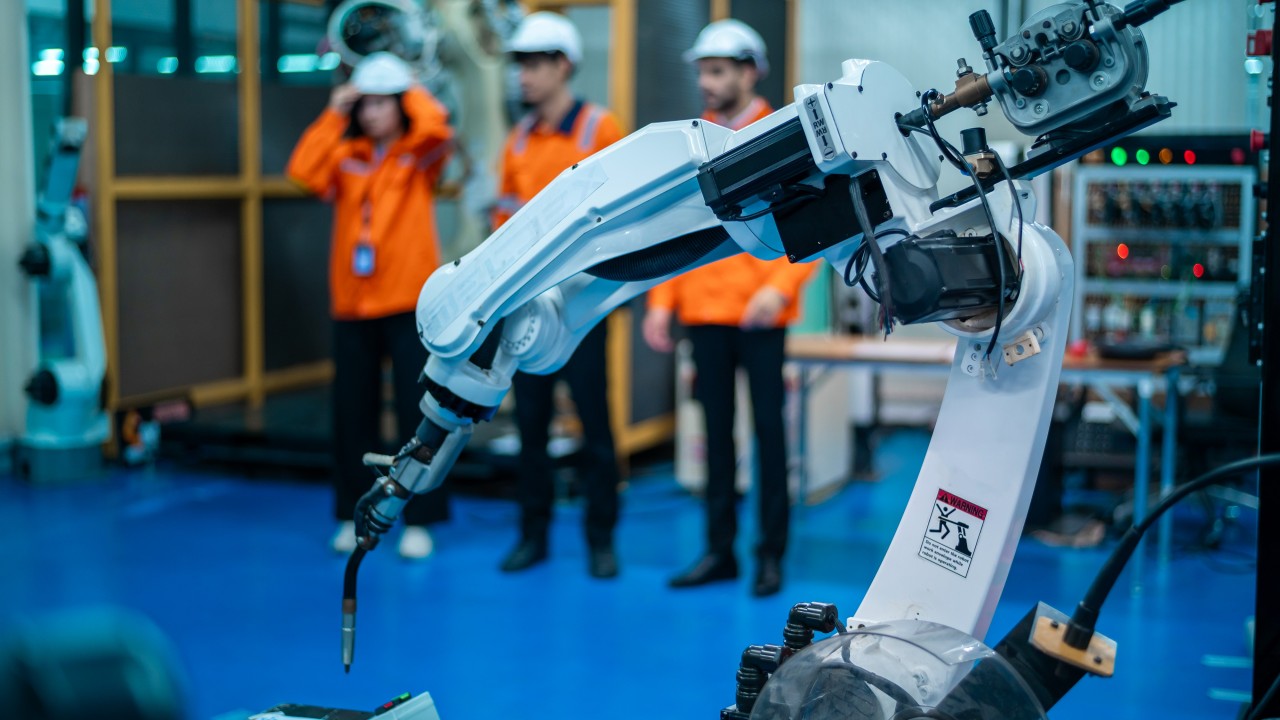
AI Agents: From Tools to Teammates
Artificial intelligence (AI) is not a far-fetched concept – it is a network of intelligent agents that have been built into our daily routines and business procedures. These agents perceive, reason, and act to resolve issues on our behalf. Some work in the background, making quick safety decisions on factory floors. Others adjust throughout time, predicting our demands at home and at work. Understanding how these agencies work and the measures they take may inspire ideas for how your own sector can benefit.
Let’s Explore eleven categories of AI agents, examples of their specific action steps, and real-world examples to see how they might benefit your organization, whether in healthcare, logistics, retail, or plumbing.

1. Simple Reflex Agents: The Instant Reactors
What they do: React the moment they detect a trigger—no memory, no learning.
Example of the Step-by-Step Process (Factory Emergency Stop):
- Continuous Monitoring: Light curtains or proximity sensors scan the danger zone perimeter in real time.
- Threat Detection: If a human or object breaches the predefined boundary, the sensor raises a digital flag.
- Signal Transmission: The flag is sent via a hardwired safety network to the machine’s controller.
- Immediate Shutdown: The controller cuts power to motors, halting conveyors or robotic arms within milliseconds.
- Alert Generation: A red light flashes and an alarm buzzer sounds to warn workers and supervisors.
Real-World Impact: In a GE Healthcare intensive care unit, patient monitors behave like reflex agents—if a patient’s heart rate spikes outside the safe range, nurses are alerted instantly, enabling life-saving interventions.

2. Model-Based Agents: The Internal Map Keepers
What they do: Build and update an internal representation of the environment to make informed decisions.
Example of the Step-by-Step Process (Google Nest Thermostat):
- Data Collection: Sensors capture temperature, humidity, and occupancy data every few minutes.
- Model Building: The AI creates a baseline “map” of typical temperature changes and typical patterns.
- Change Detection: When current conditions deviate from the model, the system marks it as an anomaly.
- Prediction: Using the model, the thermostat forecasts when you’ll return home or wake up.
- Proactive Adjustment: It warms or cools the air ahead of schedule, ensuring comfort exactly when you need it.
- Model Refinement: Every manual override like when you turn the heat up, updates the model for future accuracy.
Real-World Impact: Tesla’s Autopilot acts as a massive model-based agent, fusing camera, radar, and map data to predict traffic behavior ensuring your commute is smoother and safer.

3. Goal-Based Agents: The Strategic Planners
What they do: Define objectives and plan sequences of actions to achieve goals.
Example of the Step-by-Step Process (UPS ORION Route Planner):
- Goal Definition: The system’s objective is set (e.g., deliver 500 parcels before 6 PM).
- Data Ingestion: It gathers geocoded addresses, delivery time windows, vehicle capacities, and driver hours.
- Constraints Analysis: Traffic forecasts, road closures, and fuel limits are factored in.
- Route Simulation: The AI runs hundreds of “what‑if” scenarios to compare delivery sequences.
- Optimal Path Selection: The highest-scoring plan (fastest, least idling, best driver workload balance) is chosen.
- Driver Guidance: Turn-by-turn instructions are sent to drivers via a mobile app.
- Real-Time Replanning: If an unexpected traffic jam occurs, the system recalculates a detour on the fly.
Real-World Impact: Financial robo‑advisors like Betterment act as goal-based agents—structuring portfolios that balance growth goals with risk tolerance, then rebalance automatically.

4. Utility-Based Agents: The Trade-Off Specialists
What they do: Evaluate multiple factors to maximize a utility function—essentially, the “best” outcome.
Example of the Step-by-Step Process (Zipline Medical Drones):
- Mission Request: A rural clinic requests an emergency blood delivery.
- Parameter Assessment: The system considers distance, drone battery life, payload weight, weather forecasts, and no-fly zones.
- Utility Scoring: Each possible flight path is scored on a utility scale (e.g., safety × 0.6 + speed × 0.4).
- Optimal Path Execution: The route with the highest utility score is selected.
- Continuous Monitoring: In-flight sensors check wind speed and GPS location, comparing real conditions against the plan.
- Mid-Flight Adjustments: If wind shifts or obstacles appear (like a flock of birds), the drone recalculates its path to maintain top utility.
- Delivery Confirmation: On arrival, the drone sends a success notification and battery status for recharge scheduling.
Real-World Impact: Babylon Health’s triage AI weighs symptom severity, patient history, and available specialists before directing patients to emergency or primary care.
5. Learning Agents: The Ever‑Improvers
What they do: Learn from past experiences, refine models, and improve performance over time.
Example of the Step-by-Step Process (Amazon Product Recommender):
- Interaction Tracking: Every user click, search query, and purchase is logged.
- Feature Extraction: The AI analyzes product attributes (category, price, brand) and user behavior patterns.
- Model Training: A collaborative filtering algorithm runs nightly to update the recommendation model.
- Personalized Suggestions: When you load the homepage, the latest model generates a ranked list of products you’re likely to buy.
- Feedback Loop: Click-through rates and purchases feed back into the system for continuous retraining.
Real-World Impact: Educational platforms like Carnegie Learning adapt math problems in real time—students who struggle with fractions get extra practice, while advanced learners move on to algebraic thinking.
6. Multi-Agent Systems: Collaborative Swarms
What they do: Coordinate multiple agents that can cooperate or compete to solve large‑scale problems.
Example of the Step-by-Step Process (Autonomous Vehicle Network):
- Local Sensing: Each vehicle streams its speed, location, and sensor data to a shared network.
- Data Aggregation: A central server compiles real-time traffic, weather, and incident reports.
- Collective Decision-Making: Vehicles request optimal lanes and speeds; the server suggests coordinated speed adjustments to smooth flow.
- Distributed Execution: Each car applies the recommendations, maintaining safe distances and synchronized movement.
- Feedback Sharing: Vehicles report back on how well the suggestions worked, refining future coordination.
Real-World Impact: On Wall Street, trading platforms like QuantConnect deploy thousands of micro‑agents running diverse strategies, then dynamically allocate capital to the best performers.

7. Autonomous Agents: The Lone Operators
What they do: Function independently from end to end—no human in the loop.

Example of the Step-by-Step Process (John Deere Autonomous Tractor):
- Field Mapping: Drone or satellite imagery maps crop rows and terrain.
- Route Generation: The tractor plots efficient paths for planting, watering, or harvesting.
- Sensory Navigation: LIDAR and cameras detect rocks, ditches, and obstacles in real time.
- Task Execution: Actuators control seed dispensers, sprayers, or harvesters precisely.
- Anomaly Handling: If equipment jams or a sensor fails, the tractor returns to a safe zone and requests human assistance.
- Data Reporting: Each completed task logs yield estimates and field conditions for future planning.
Real-World Impact: In large warehouses, Walmart’s inventory drones scan shelf barcodes autonomously, generating restock alerts without human intervention. Artificial intelligence powered tractors from John Deere allow fully automated farming, which can be extremely productive and allow more food to be produced to feed the world.

8. Human-in-the-Loop Agents: The Cooperative Duo
What they do: Fuse machine speed with human judgment for optimal outcomes.
Example of the Step-by-Step Process (Zendesk AI + Human Agent):
- Ticket Intake: Customer queries come in via chat, email, or social media.
- AI Pre‑Analysis: Natural language processing categorizes sentiment, extracts key issues, and suggests an initial response draft.
- Human Review: A support agent reads the draft, tailors it with brand voice, and adds empathy or context.
- Dispatch: The finalized response is sent to the customer.
- Learning Loop: Customer satisfaction ratings and agent edits feed back to improve future draft quality.
Real-World Impact: In medicine, IBM Watson flags potential diagnoses, but doctors review patient history and lab results before making the final call.
9. Conversational Agents: The Fluent Communicators
What they do: Understand and generate human language for seamless dialogue.
Example of the Step-by-Step Process (Duolingo Max AI):
- Prompt Initialization: The AI presents a real-world scenario, like ordering coffee in French.
- User Response Analysis: Speech recognition and NLP parse the learner’s spoken or typed input.
- Error Detection: The system identifies grammar mistakes, vocabulary misuse, or pronunciation errors.
- Contextual Feedback: It offers corrections with explanations and examples.
- Adaptive Dialog: Based on performance, the AI adjusts difficulty, introduces synonyms, or changes the conversational context.
- Progress Tracking: Learner metrics—fluency score, error frequency—update a personalized dashboard.
Real-World Impact: Customer support bots from Intercom handle tier‑1 inquiries end to end, escalating only the most complex issues to human teams.
10. Monitoring Agents: The Silent Guardians
What they do: Keep watch over systems, detecting anomalies before they escalate.
Example of the Step-by-Step Process (CrowdStrike Falcon):
- Endpoint Instrumentation: Agents installed on each workstation and server collect process and network data.
- Behavior Profiling: Normal patterns of file access, process creation, and network calls are established.
- Anomaly Detection: Deviations like unauthorized encryption or data exports trigger alerts.
- Automated Containment: Suspect endpoints can be quarantined within seconds.
- Alert & Report: Security teams receive detailed incident reports.
- Threat Intelligence Sharing: New signatures are distributed globally to protect other clients.
Real-World Impact: Siemens uses AI monitoring on manufacturing lines to predict equipment failures days before they occur, saving millions in downtime.
11. Game Agents: The Architects of Play
What they do: Create dynamic, responsive virtual opponents and allies.
Example of the Step-by-Step Process (Civilization VI Diplomacy AI):
- Player Action Analysis: Track how the player builds cities, forms alliances, and wages wars.
- Strategic Evaluation: Assess the player’s overall military strength, economy, and diplomatic ties.
- Decision Planning: Choose to negotiate, trade, or invade based on each leader’s personality traits.
- Move Execution: Issue commands to units or send diplomatic messages.
- Adaptive Response: Change tactics mid-game if the player surprises the AI with unexpected moves.
Real-World Impact: Fortnite’s matchmaking bots analyze lobby skill levels to insert AI players that balance match competitiveness at any hour.

Applying AI Agents to Your Business
As you can see from the list Agents can be used in many number of ways and are applicable to many business functions. Imagine you’re a plumber working on a leaky pipe and can’t answer ringing phones. An AI conversational agent steps in:
- Call Answering: The AI picks up incoming calls 24/7 and greets callers warmly.
- Information Gathering: It asks for name, address, and issue details (e.g., “Tell me more about the leak—where is it located?”).
- Appointment Scheduling: It checks your calendar in real time and offers the next available time slot.
- Follow‑Up Logging: All call data is emailed to you immediately.
- Reminder Dispatch: A day before, the AI sends SMS reminders to customers.
Now you focus on repairs, knowing no lead is missed.
Endless Possibilities Limited by Imagination
AI agents are more than simply tools, they play an important role in the world we live in. Every grouping presented here serves a certain purpose, ranging from millisecond response to long-term strategic decisions.
Understanding these agent types helps us to realize the true complexity and diversity of artificial intelligence. While these technologies are powerful, they are not a replacement for humans rather, they are extensions of our creativity, efficiency, and problem-solving abilities.
How have AI agents impacted your industry or daily life? Can you think of new ways these agents could transform your workflow or business? Share your thoughts with GAME PILL Mike Sorrenti through DMs, we’d love to hear from you!





